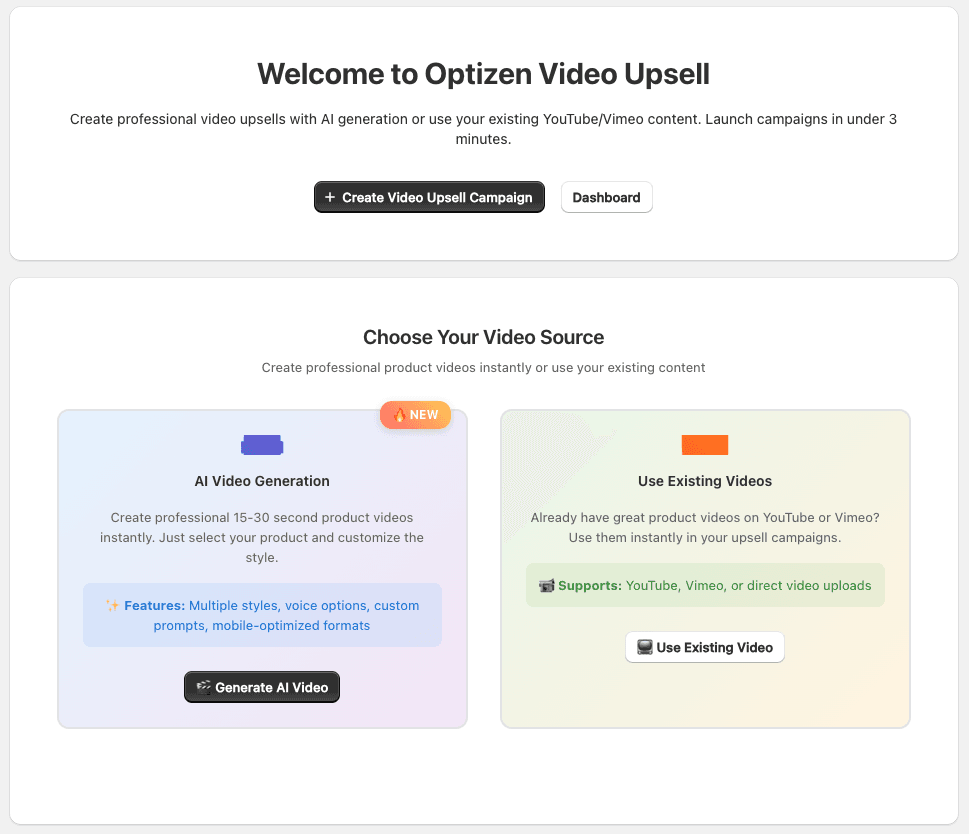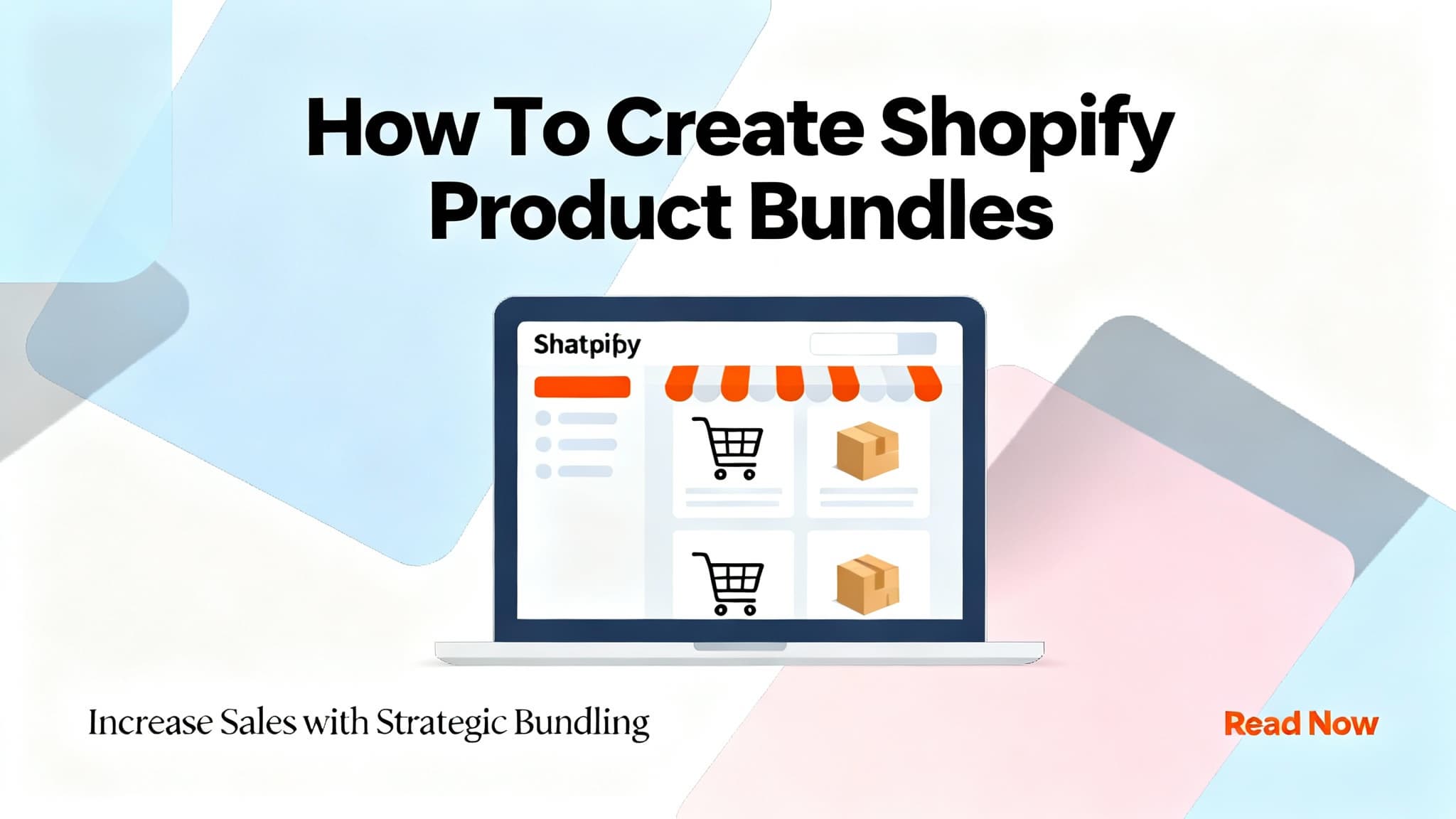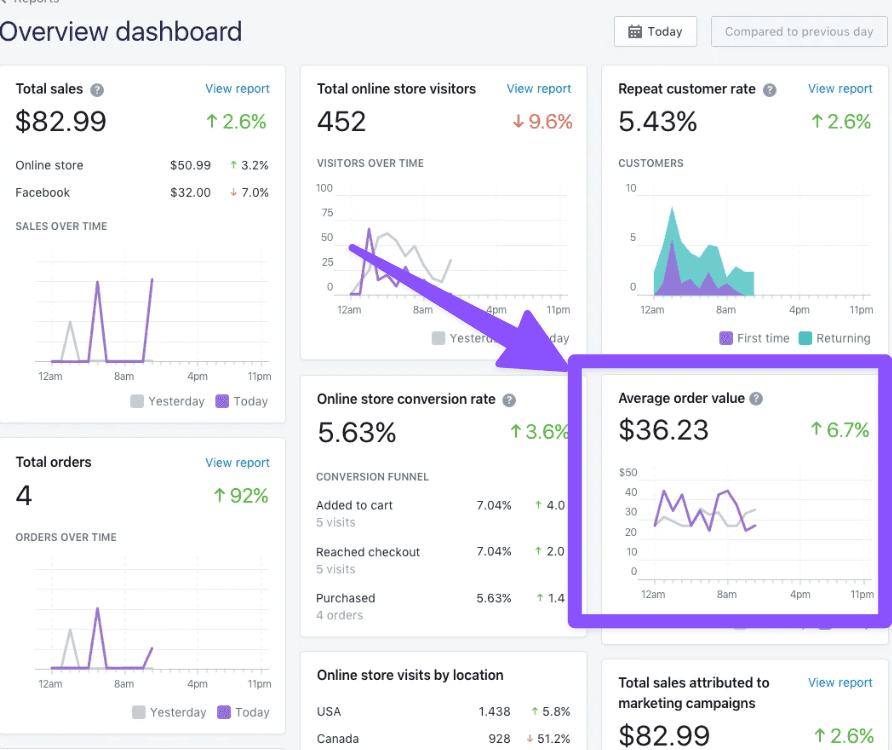Optimizing the Conversion Funnel: A Technical Framework for High-Impact Video Upsells

Video upsells are short promotional videos presented to a customer during the checkout process. They offer an upgraded product or a premium service to the buyer. This strategy effectively demonstrates the added value of the upgrade. By showing the benefits visually, video upsells persuade customers to increase their order value.
Amplifying average order value (AOV) is a key metric for sustainable e-commerce growth but many methods risk alienating the very customer base they’re trying to build. The solution isn’t complicated. It’s a well-timed, visually compelling video upsell at the point of conversion.
At its core, this is a short-form promotional video asset in the checkout sequence. Its job is to intercept a customer with high purchase intent and present a better product, a higher service tier or a premium alternative. By explaining the value proposition visually, the conversion to the higher-ticket item increases exponentially. This isn’t a blunt instrument for revenue extraction; it’s a way to align the customer with the best solution in your product ecosystem.

What is a Video Upsell: Taxonomy and Strategic Imperative
A video upsell is a very specific marketing intervention. It’s a dynamic content asset deployed to add to a transaction in medias res. The customer’s transactional intent is at its peak; cognitive friction is low. This is the moment where a well-crafted visual narrative can reframe the original purchase decision and pivot the customer to a higher-value offering.
The goal is a symbiotic value exchange. For everyone involved.
Meet Eleanor, a 42-year-old freelance UX/UI designer buying project management software. At the checkout gateway, a 45-second modal video is triggered. This asset doesn’t list features. It shows how the premium subscription’s native API integrations with her design tools (Figma, Adobe Creative Cloud), unlimited cloud storage, a major pain point given her old MacBook Pro’s storage constraints, and a dedicated Tier-2 support specialist would make her workflow better. The premium tier was a consideration but the visual demonstration of its practical application made the upgrade a no-brainer.
This is its magic. The numbers are clear. 92% of businesses say video makes their value proposition more understandable for customers. Comprehension equals perceived value and willingness to upgrade. 89% of consumers say a brand’s video was the reason for a purchase. These aren’t just numbers; they’re signals of customer confidence. And confident customers invest more because risk is mitigated by understanding.
Upsell vs. Cross-Sell: A Strategic Imperative
Before investing in video asset creation, you must distinguish between an upsell and a cross-sell. Both aim to increase transaction value but their psychology and tactics are different. Blurring the lines creates dissonant messaging and conversion friction.
It’s a critical distinction.
Upsell: The goal here is to persuade a customer to buy a better, higher-tier version of a product or service they’ve already chosen to buy. It’s an upgrade—a vertical scaling of the customer’s existing solution. Your video asset must show, not tell, the delta in value and experience between the standard and premium versions.
It’s not about the feature set. It’s about the emotional and functional state.
Cross-Sell: This is the introduction of a complementary, ancillary product. Think of a smartphone purchase followed by an offer for a case. The video asset’s job here is to illustrate how the add-on enhances the utility or longevity of the primary purchase—a horizontal expansion.
This taxonomy determines the entire strategic approach—the messaging, the timing, the core value proposition. A customer evaluating an upsell is looking for an optimized solution to their original problem. A customer considering a cross-sell is looking to complete or protect their investment. For example Sarah, the owner of a digital fitness platform. A customer buying her weight loss program gets a video upsell for a premium plan with one-on-one coaching, better results for the same core goal. But a customer buying her yoga course is offered a cross-sell video for a high-density yoga mat. It’s a different vector of value altogether.
A Framework for Building a Video Upsell
Creating a video asset that drives higher AOV is an art and science. It must be seen as a helpful extension of the user journey, not a transactional obstacle.The best examples are short, benefit-focused and emotionally resonant.
Here is the operational framework:
- Prioritize Benefit Over Feature: Technical specs are irrelevant to the end-user. They care about outcomes: time saved, friction reduced, status elevated, happiness increased. The narrative must be anchored in these benefits.
- Enforce Temporal Brevity: 30-90 seconds is the optimal duration. 90 seconds is the outer limit. The user’s attention is a finite resource at this critical transactional stage; the core message must be delivered with maximum efficiency before they proceed to final payment. Be ruthless.
- Use Dynamic Demonstration: Don’t just claim better efficiency. Show it. A side-by-side comparison of the basic version vs the premium tier is exponentially more persuasive than descriptive text.
- Pre-empt Price-Value Objections: Briefly and confidently justify the price difference. Frame it as an investment in a better outcome, not an expense.
- Use a Conspicuous Call-to-Action (CTA): The “Upgrade Now” button must be prominent, clear and frictionless. Don’t force the user to search for the next step.
- Add Social Proof and Trust Signals: A brief, authentic testimonial from a happy customer or a displayed trust badge can reduce purchase anxiety and validate the decision to upgrade.
Technical Execution: Tools and Best Practices
You don’t need a Hollywood budget to succeed. But quality is non-negotiable.
- Script and Storyboard: Even for a 30-second asset, a script ensures messaging discipline and narrative coherence.
- Prioritize Audio: This is key. Audiences will tolerate suboptimal video quality but poor audio is an immediate deal-breaker. Invest in an external microphone.
- Control the Recording Environment: Record in a quiet space to minimize ambient noise.
- Optimize Lighting: Natural light is often sufficient and preferable. A simple three-point lighting setup can professionalize the output significantly.
- Use Accessible Post-Production Tools: Modern smartphones offer broadcast-quality video capture. Editing can be done with tools like Adobe Premiere Rush or DaVinci Resolve’s free tier.* Design for Mobile-First: Most views will be on mobile. Ensure all on-screen text and key visual elements are legible on smaller screens.
- Include Closed Captions for Accessibility and Context: A significant percentage of users watch videos with the sound off. Captions are crucial for message delivery.
- Institute A/B Testing: Never assume the first version is best. Continuously test variables—video length, CTA phrasing, thumbnail images—to optimize for conversion.
Strategic Placement for Maximum Impact
The successful deployment of a video upsell is as much about timing and location as it is about content. Premature deployment feels pushy; late deployment is irrelevant.
Here are the prime locations:
- Point-of-Sale/Checkout Interface: The classic deployment. The video appears as a modal or embedded element within the cart or checkout page. Must be easily dismissible to avoid disrupting users who aren’t interested.
- Post-Conversion Thank You/Confirmation Page: The user has already purchased and is feeling positive about the brand. This is a great moment to offer an upgrade, shifting focus from AOV to CLV.
- In-App/User Dashboard: For SaaS or subscription models, this is a powerful location. As the user interacts with the basic feature set, a context-aware video can be triggered to show the power and utility of premium-tier features they’re not using.
- Post-Purchase Email Automation Sequences: Deployed within 24-48 hours, a video in an email can re-engage the user with a highly relevant upgrade offer, reinforcing the value of their recent purchase and presenting a logical next step.
The key is to be non-intrusive. The video should be a helpful recommendation, not a roadblock.
Departmental Ownership: Sales vs. Customer Success
The question of departmental ownership for upsell strategy is a tough organizational challenge. Does it fall to the Sales team, built for closing, or the Customer Success team, designed for relationship management?
The Sales team, incentivized by commission-based models, has the skills for conversion but may use tactics that feel too aggressive to an existing customer. The CS team operates from a position of trusted advisorship, making their recommendations feel more authentic. But they may lack the commercial acumen to close the upsell.The ideal scenario is a collaborative effort.
Delegate ownership based on the customer’s lifecycle stage. Let Sales own the video upsell for new customers at the initial point-of-sale, their natural habitat. For the existing customer base, empower the Customer Success team. They can deploy upsell videos when they see a customer hitting usage limits or expressing needs that a higher tier would solve. The upsell becomes a solution, not a sales pitch. Marketing should be the central production hub, ensuring brand consistency and high-quality asset creation for both teams. This integrated approach aligns the entire organization around the dual goals of revenue growth and customer satisfaction.
Final Points
Video upsells are not a tactic; they’re a strategy to build deeper customer relationships and drive key business metrics. It’s not about extracting maximum value from a single transaction. It’s about showing a path to a better experience. When done well—from content creation to placement, the result is not only more revenue but more customer satisfaction and long-term loyalty. That’s the justification for the investment.
Commonly Asked Questions
Below are common questions we get asked.
How does a video upsell provide post-purchase value to a customer?
Its value is in visualizing abstract benefits. Instead of parsing dense text descriptions of “premium features,” the customer can see the functionality in action. This reduces the cognitive load to understand the offer and enables them to make a more informed decision about a solution that can actually improve their experience.
What’s the best way to upsell services via video?
Narrative-driven storytelling is the most powerful approach. Use case studies and customer testimonials. By having existing customers share their success stories and quantifiable results achieved through the premium service, you build massive trust. This leverages third-party validation, showing the tangible outcome of the service rather than just describing its features.
Beyond revenue growth, what are the tangible benefits for the existing customer base?
The biggest benefit is proactive education. A well-executed video upsell educates customers on the full range of solutions you offer. It shows you’re paying attention to their evolving needs and can introduce them to services or product tiers that solve problems they may not have even articulated yet. That’s anticipatory problem-solving, the foundation of deep, long-term brand loyalty.
Ready to Boost Your Shopify Store?
Increase revenue with video upsells and dominate search rankings with AI-powered SEO.
Related Articles

Creating Product Bundles In Shopify – Strategic Options
Create product bundles in Shopify by using an app. First, install the official Shopify Bundles app from the app store, or alternative apps such as Optizen Video Upsells. Inside the app, click “Create bundle” to begin. You then choose which products to include in your offer. Set a fixed price or a percentage discount, then […]

Finding Your Average Order Value in Shopify (And Why It Matters)
Find your Average Order Value (AOV) in your Shopify reports. Navigate to the Analytics section from your Shopify admin dashboard, then select Reports. Your store’s AOV is a key metric displayed on the main sales reports. You can also adjust the date range to analyze your AOV over specific periods. First, the easy part. To […]

Proven Methods To Increase AOV In Your Shopify Or Ecommerce Store
Increase average order value (AOV) by offering product bundles and volume discounts. Set a minimum spend threshold to unlock free shipping for customers. You can also upsell premium products and cross-sell related items in the cart. These strategies encourage shoppers to spend more, directly boosting your AOV. Let’s be honest, the whole game of running […]